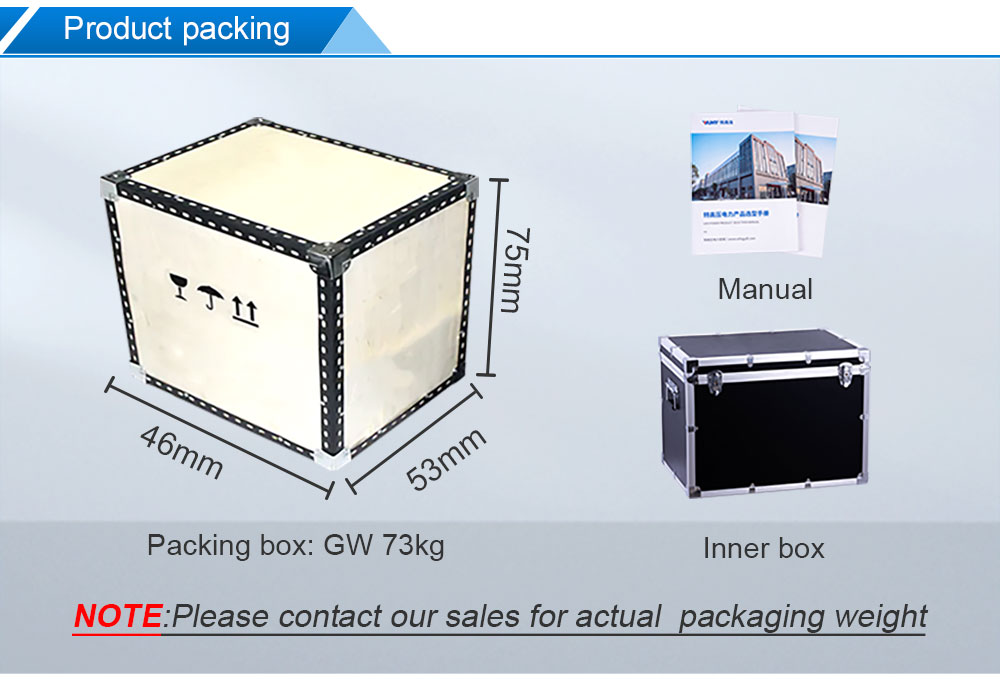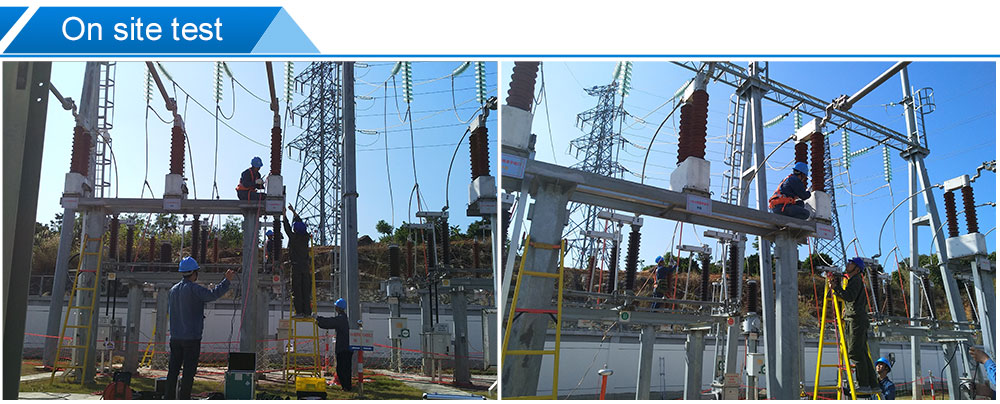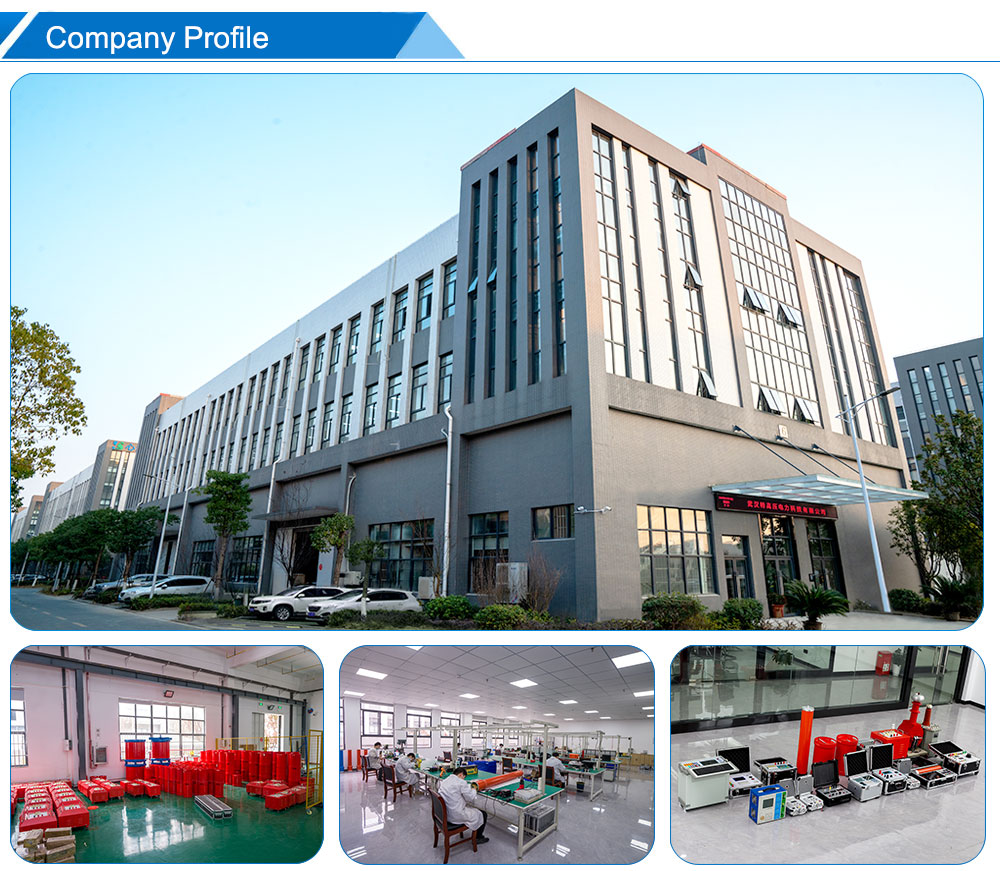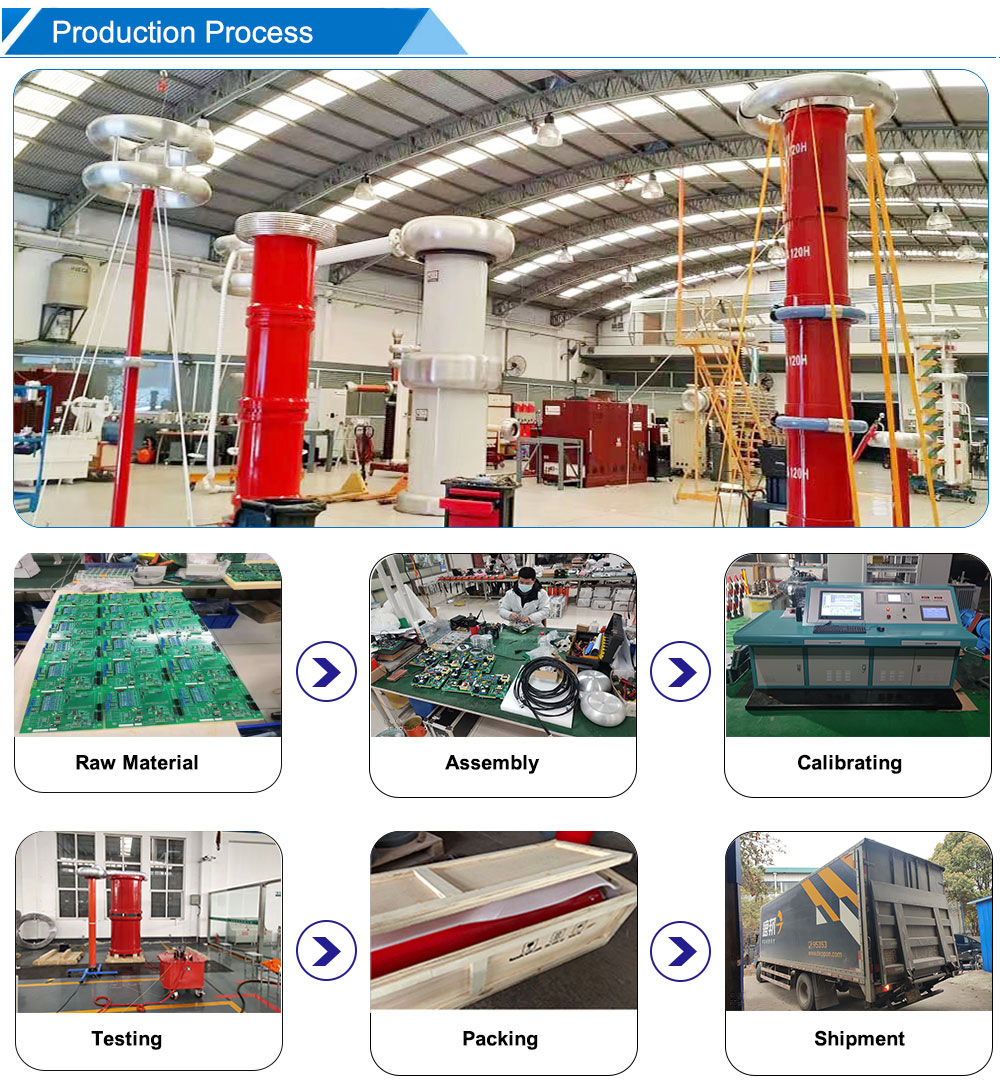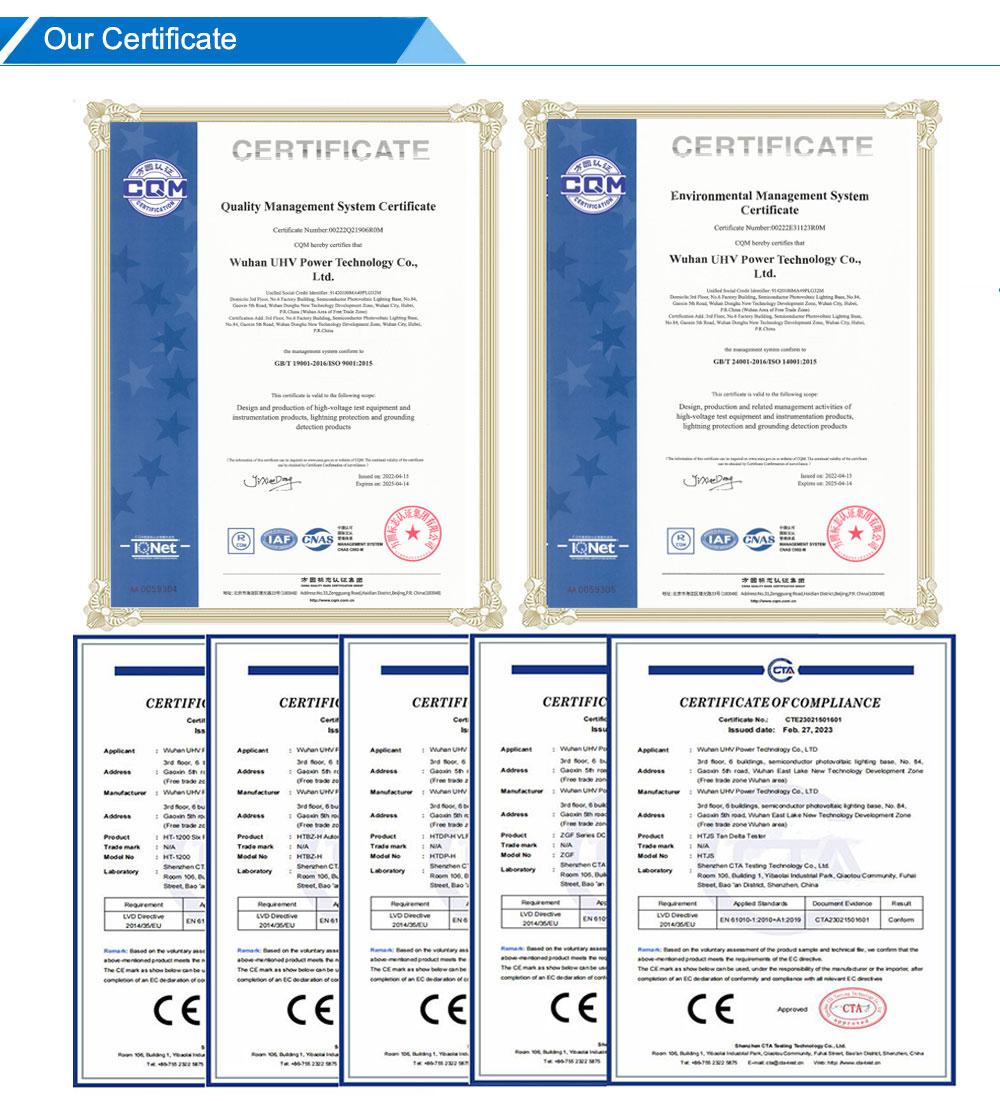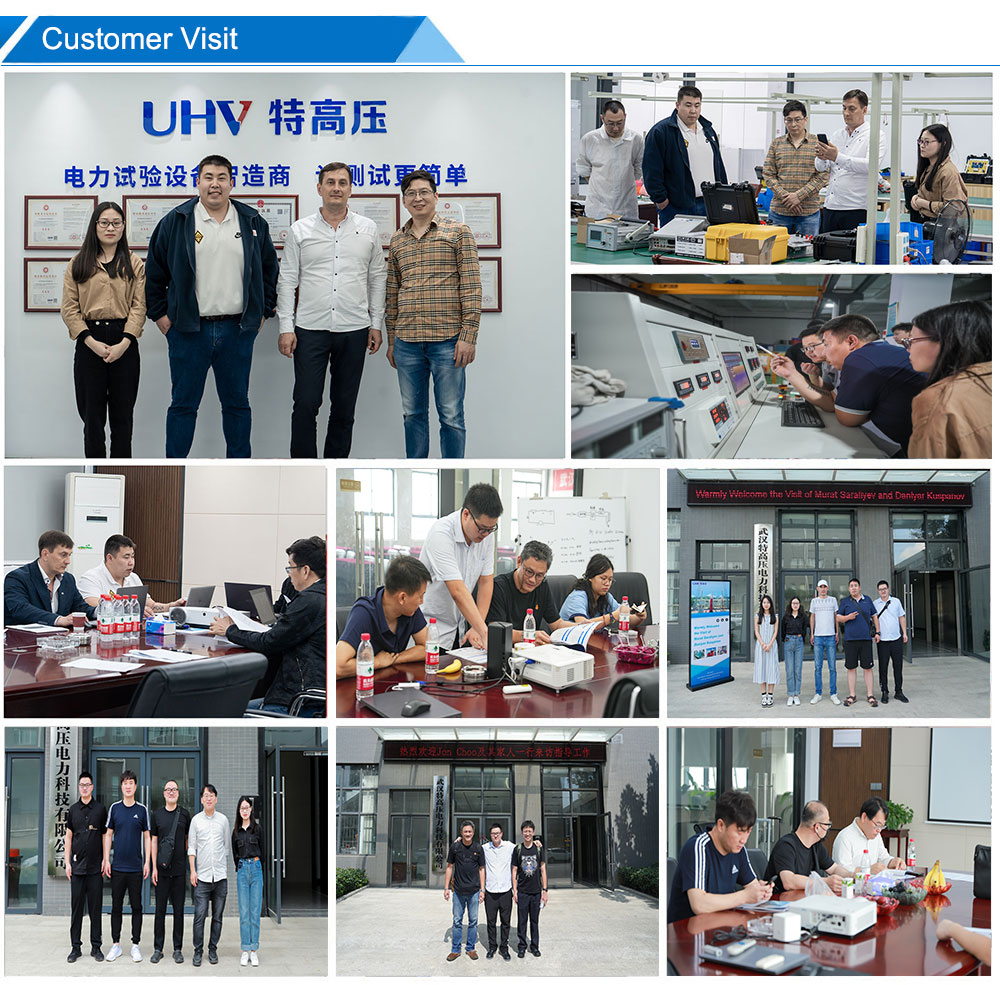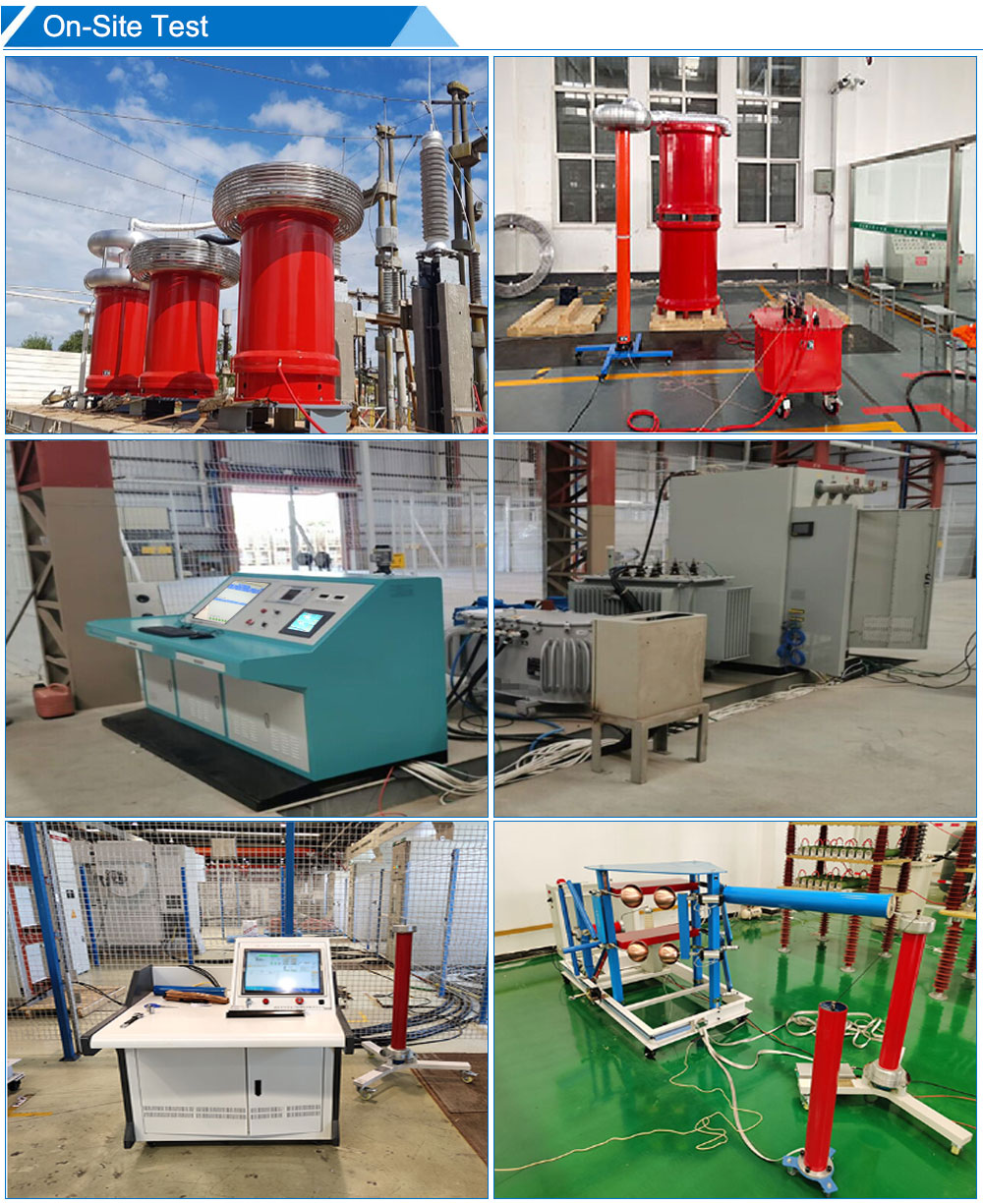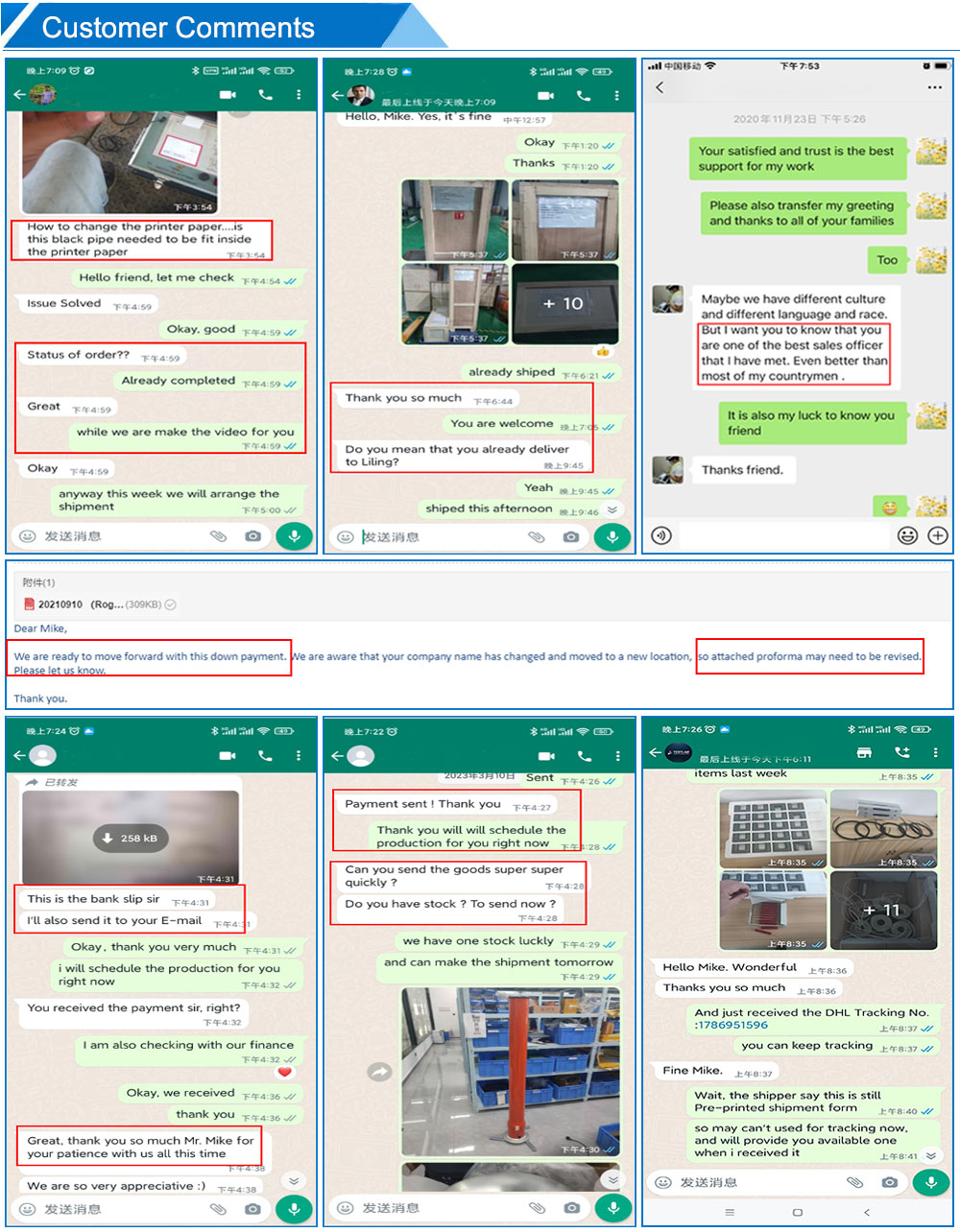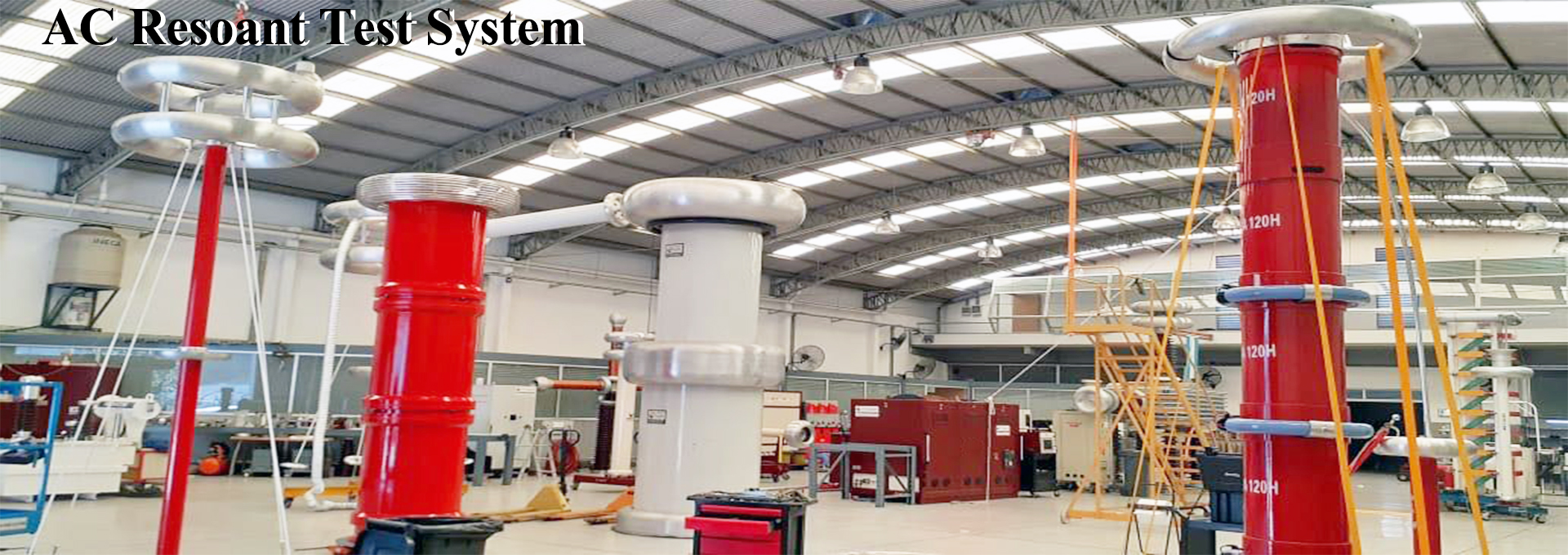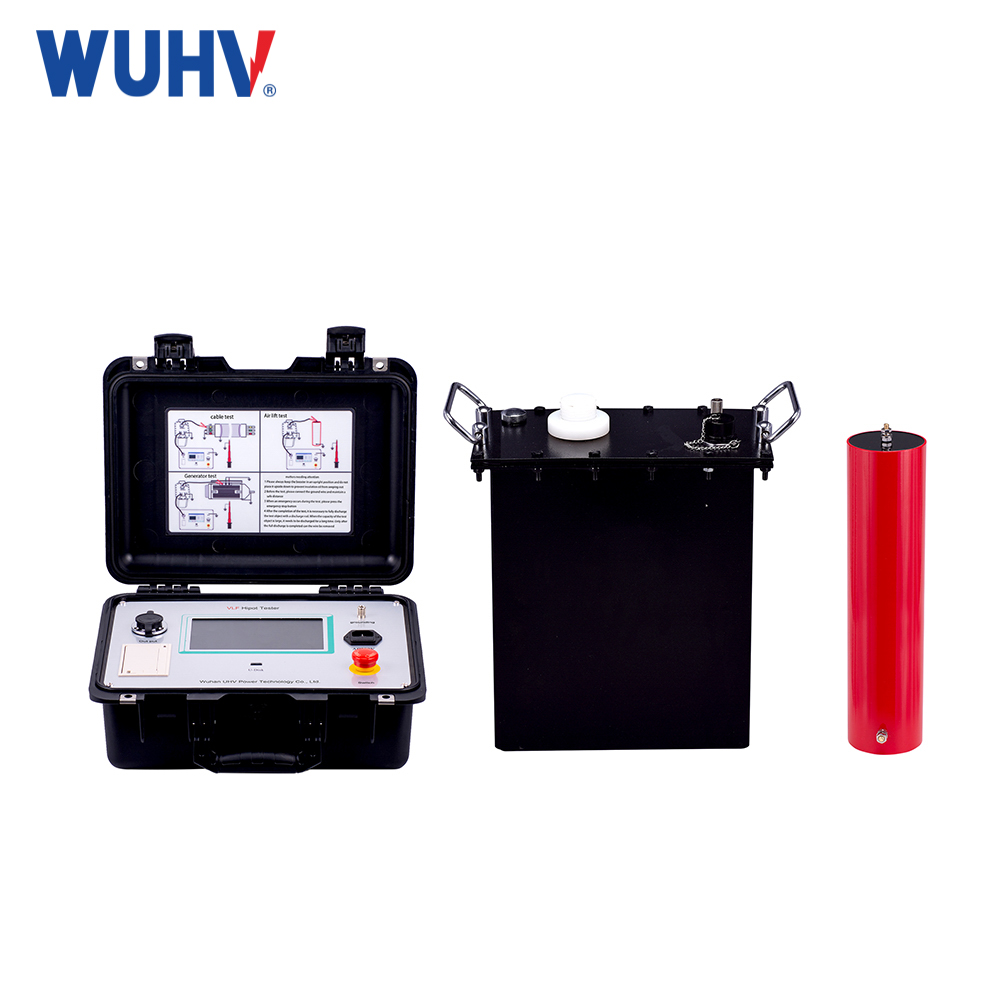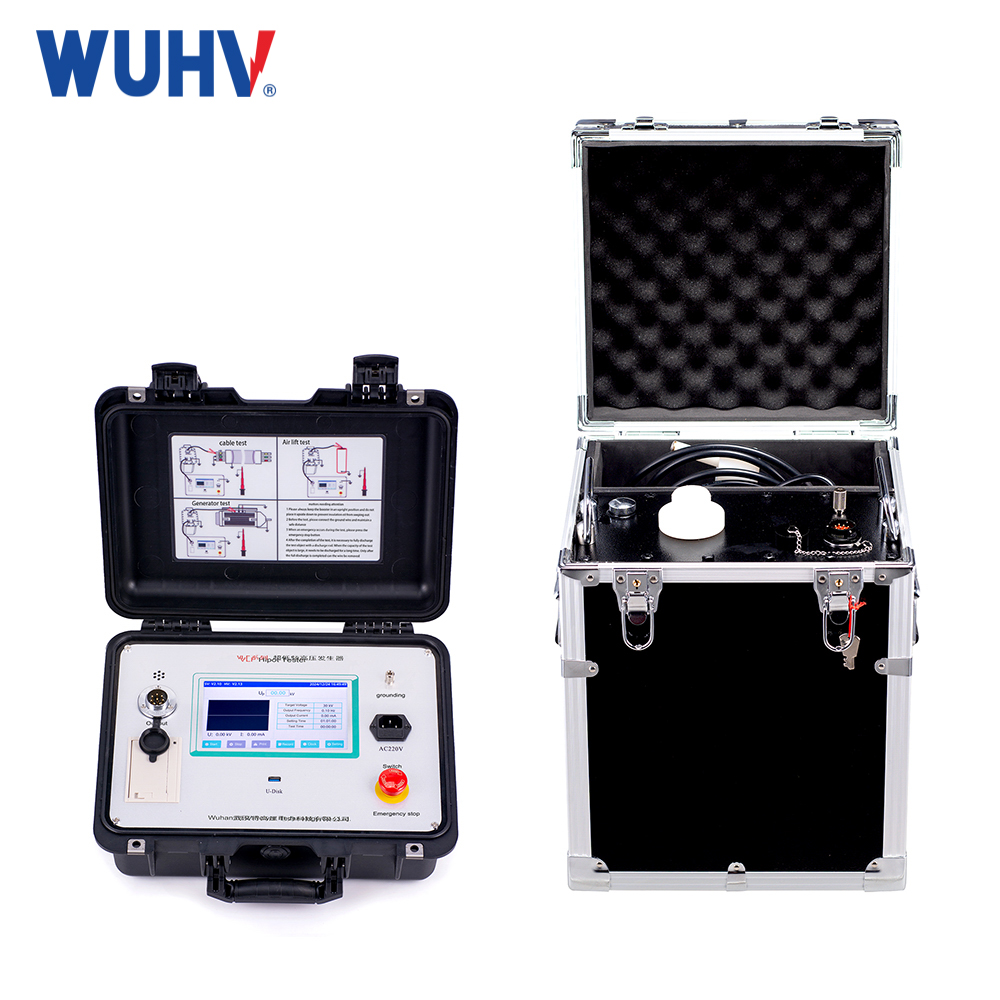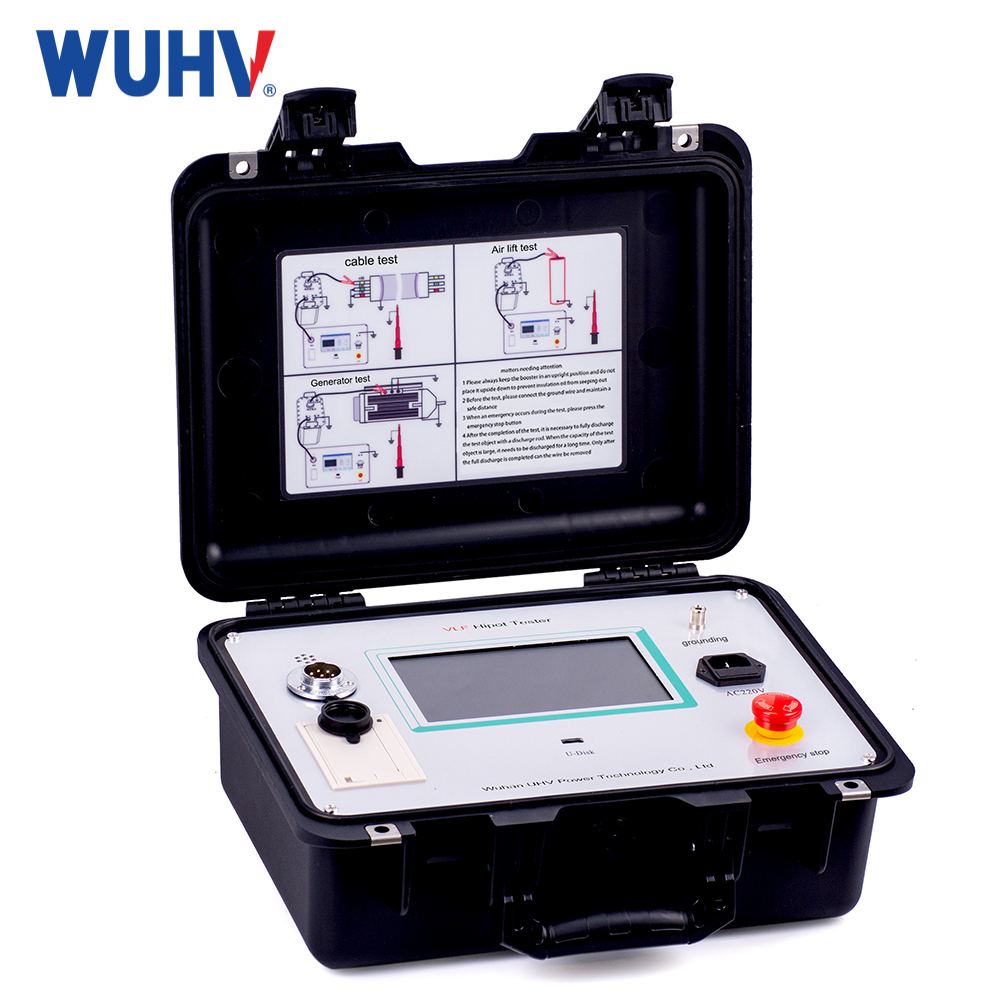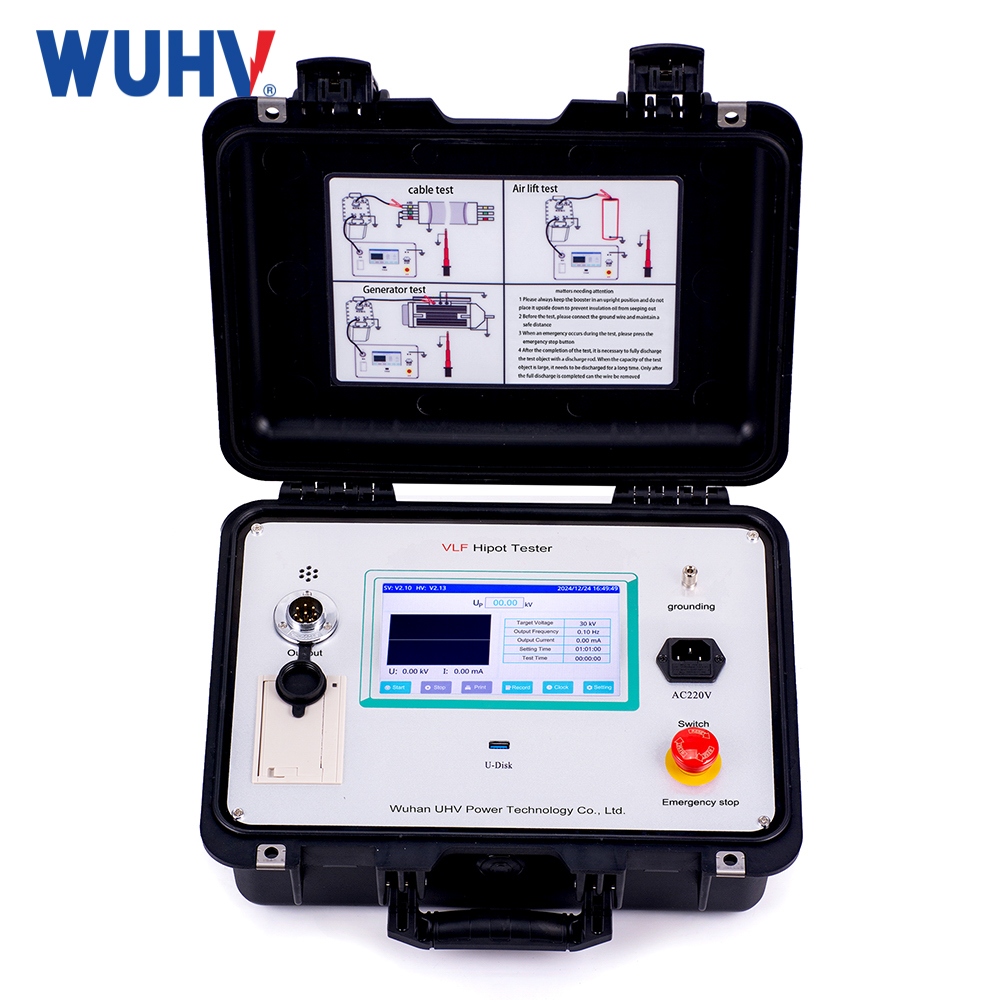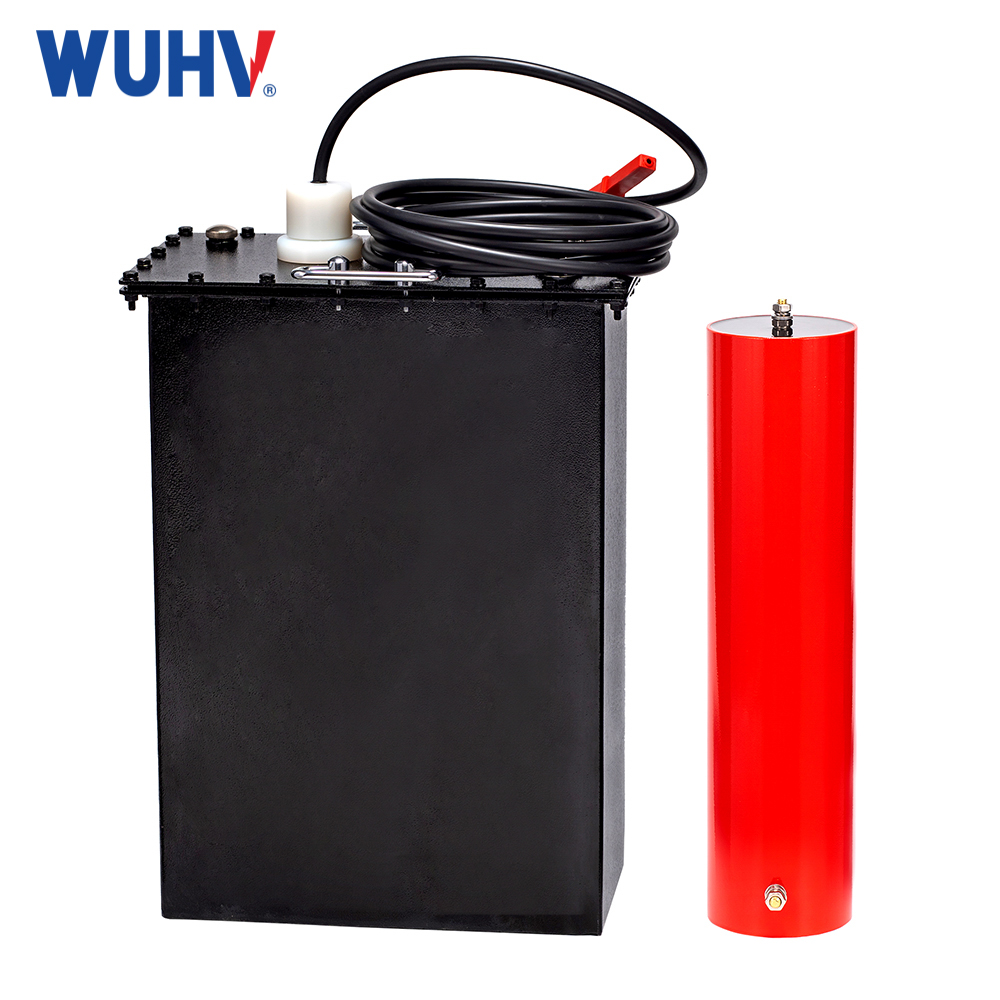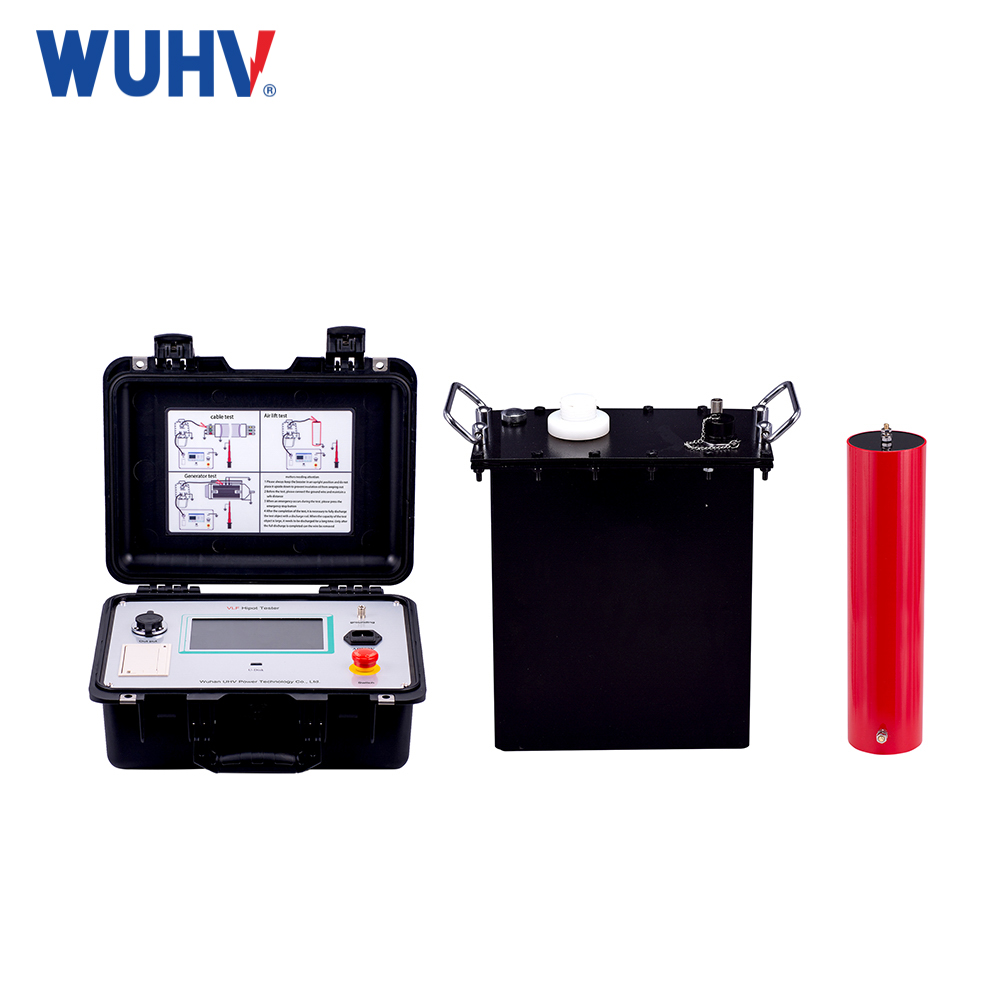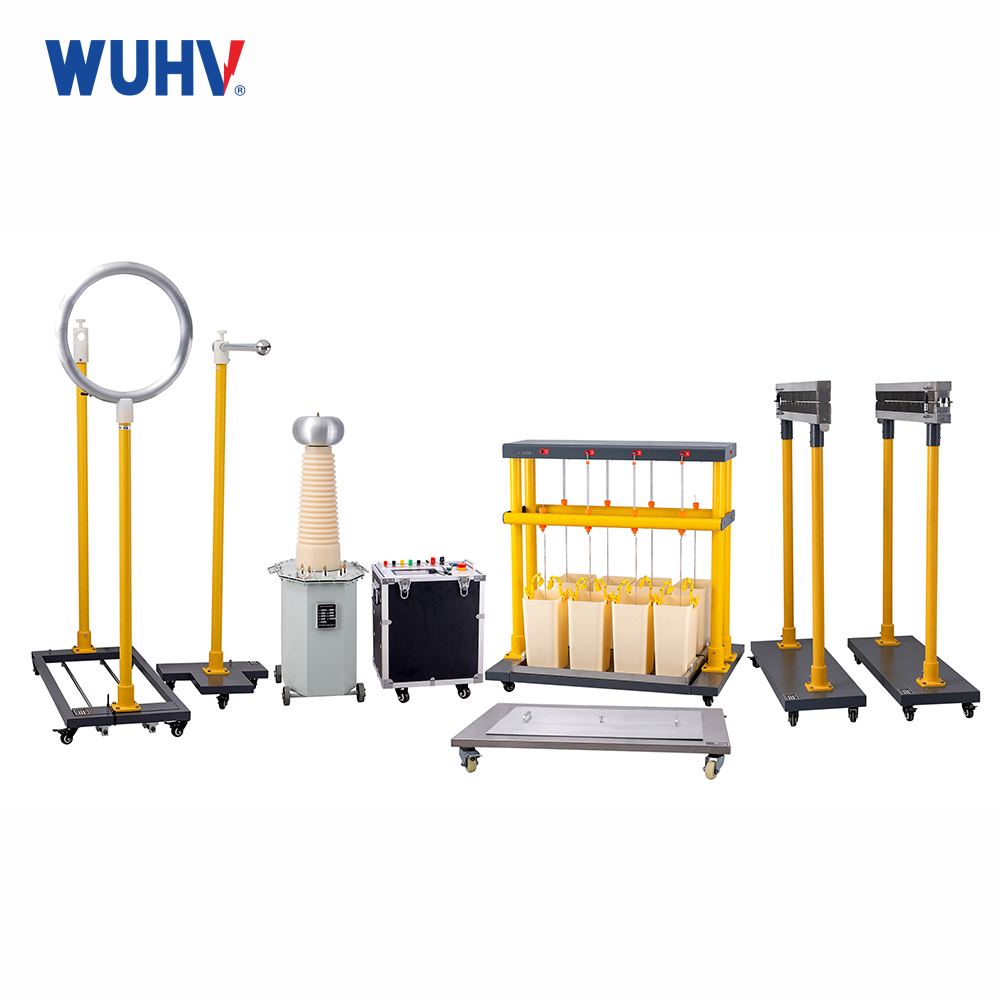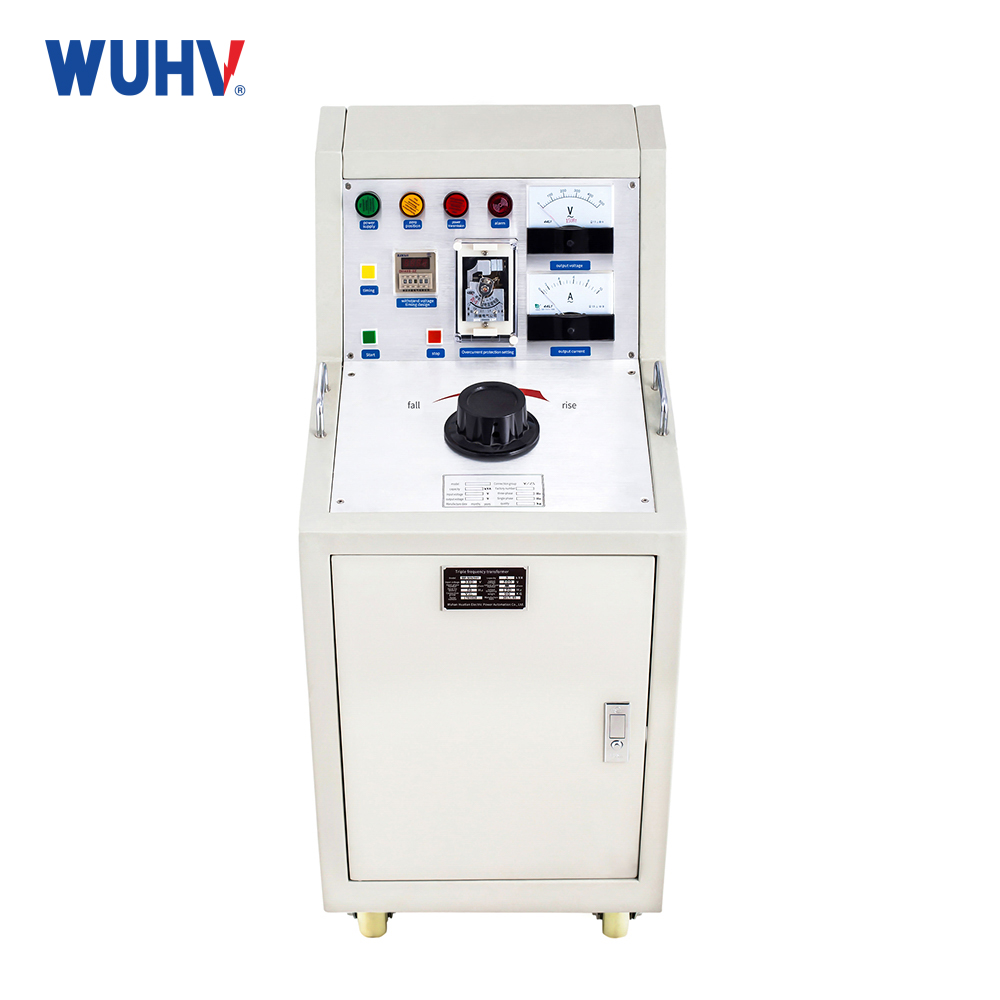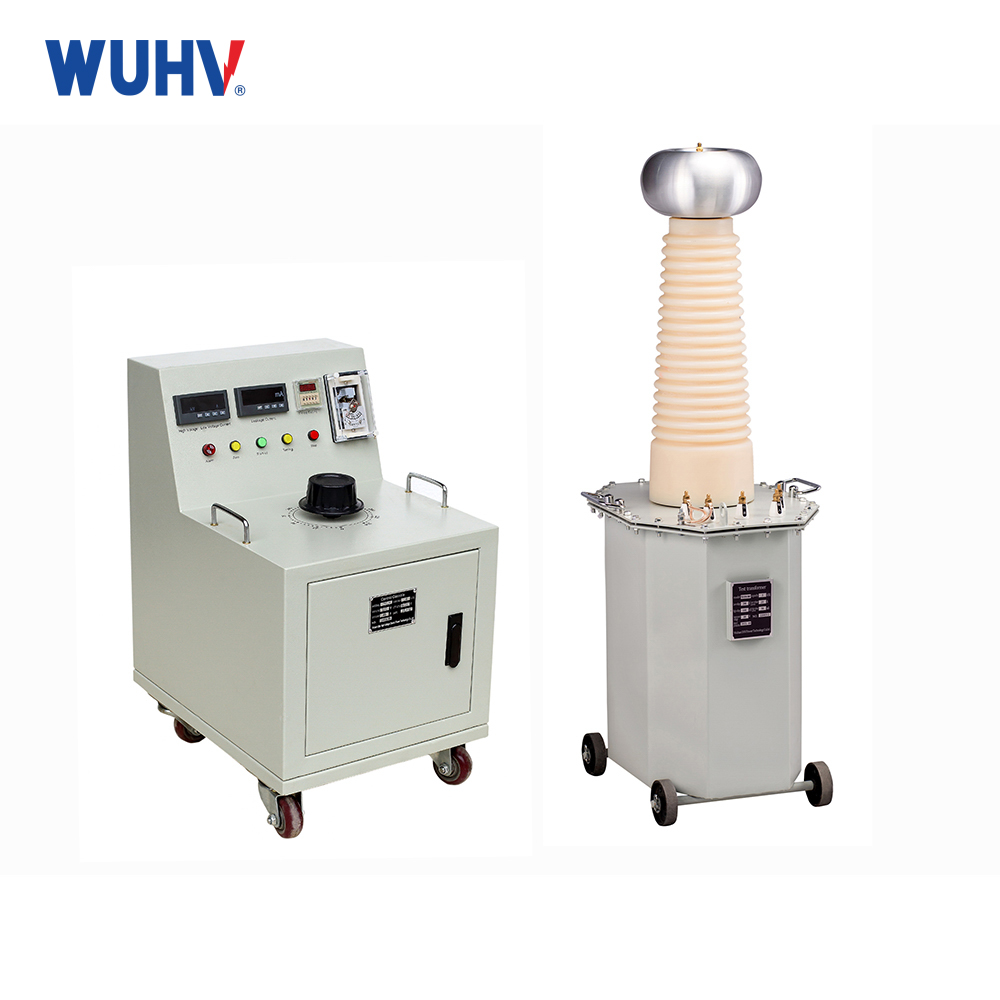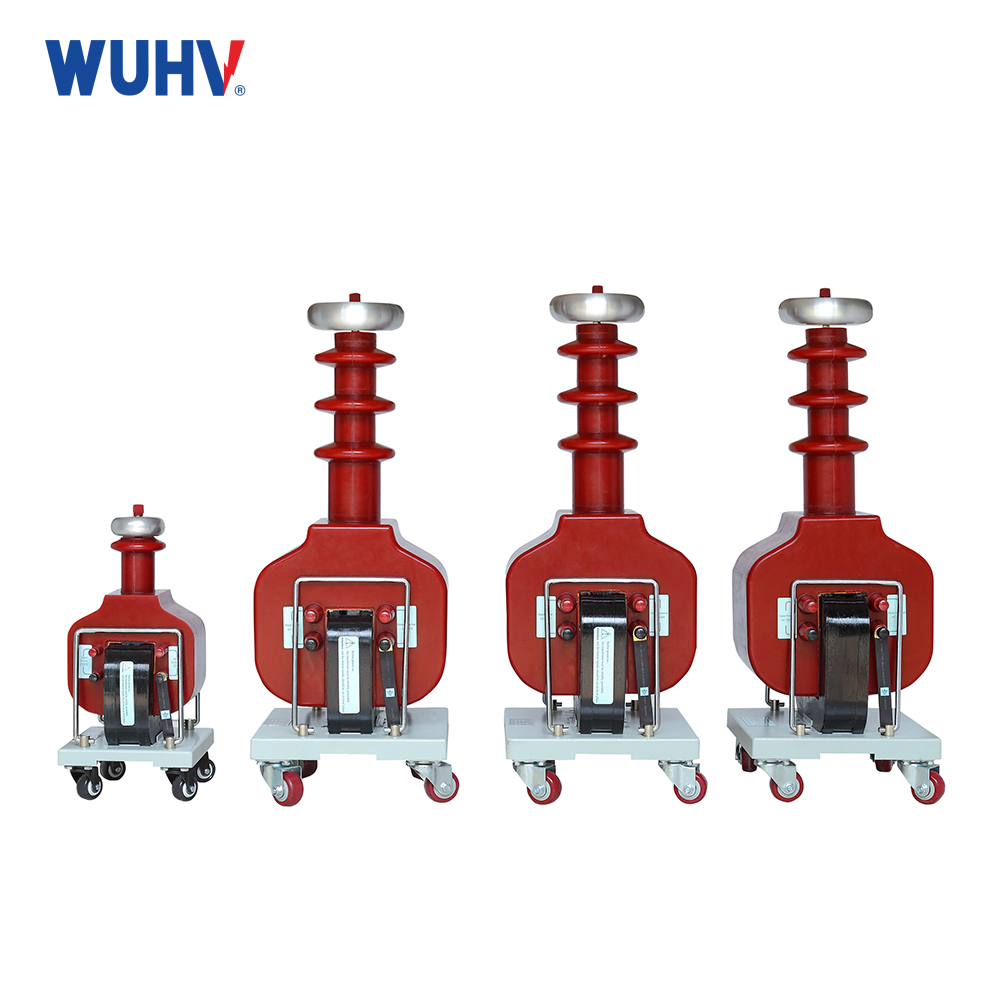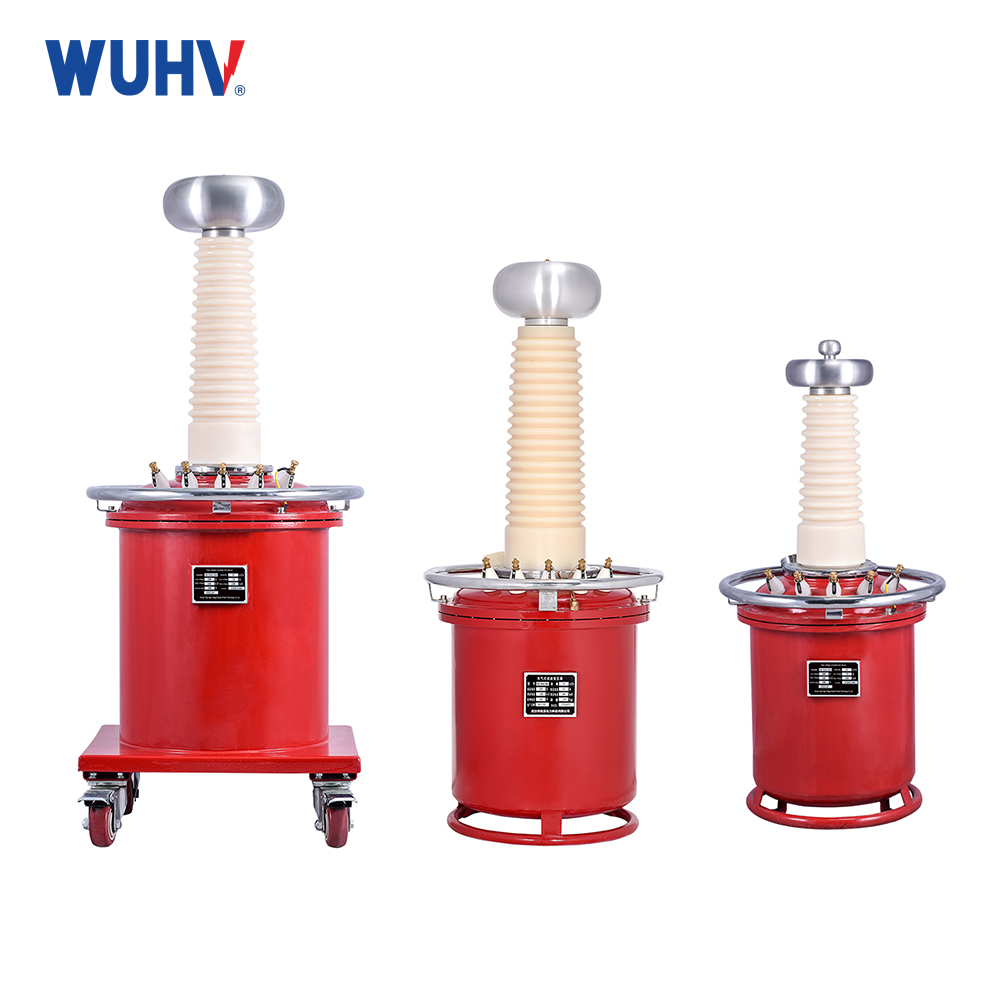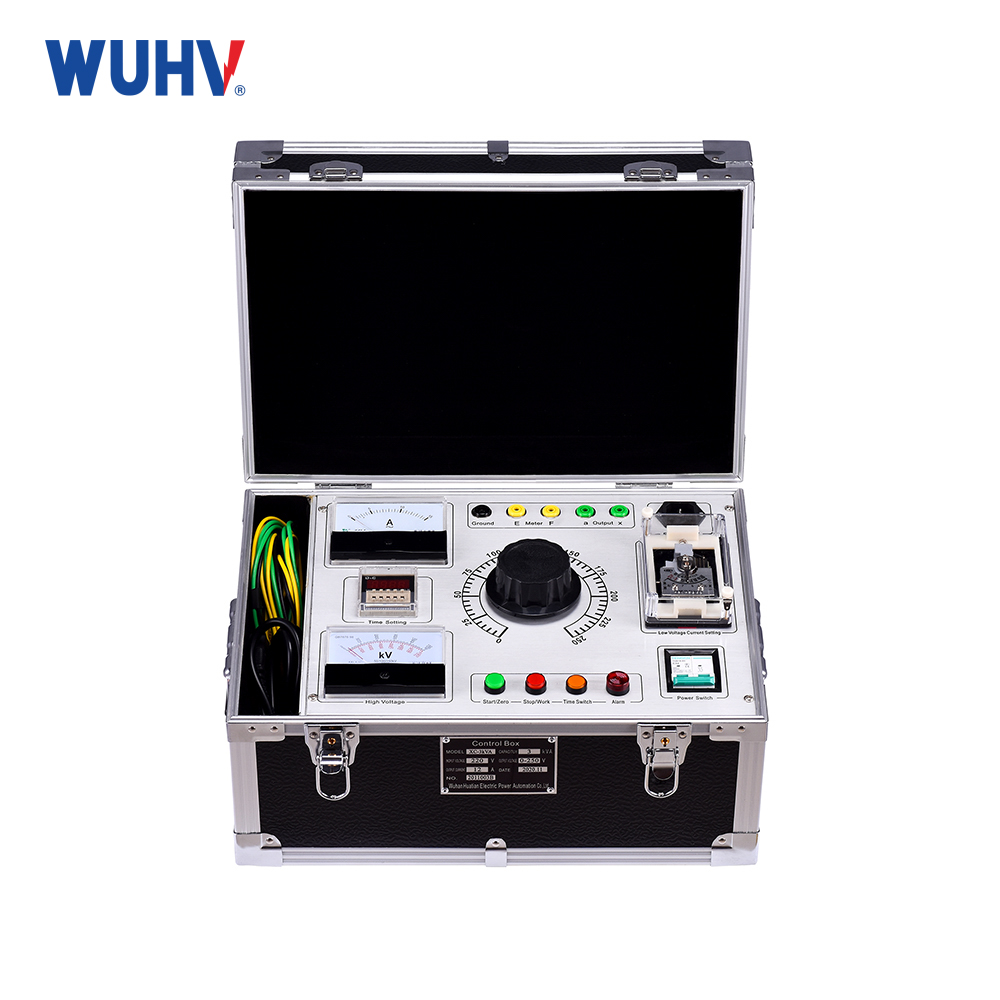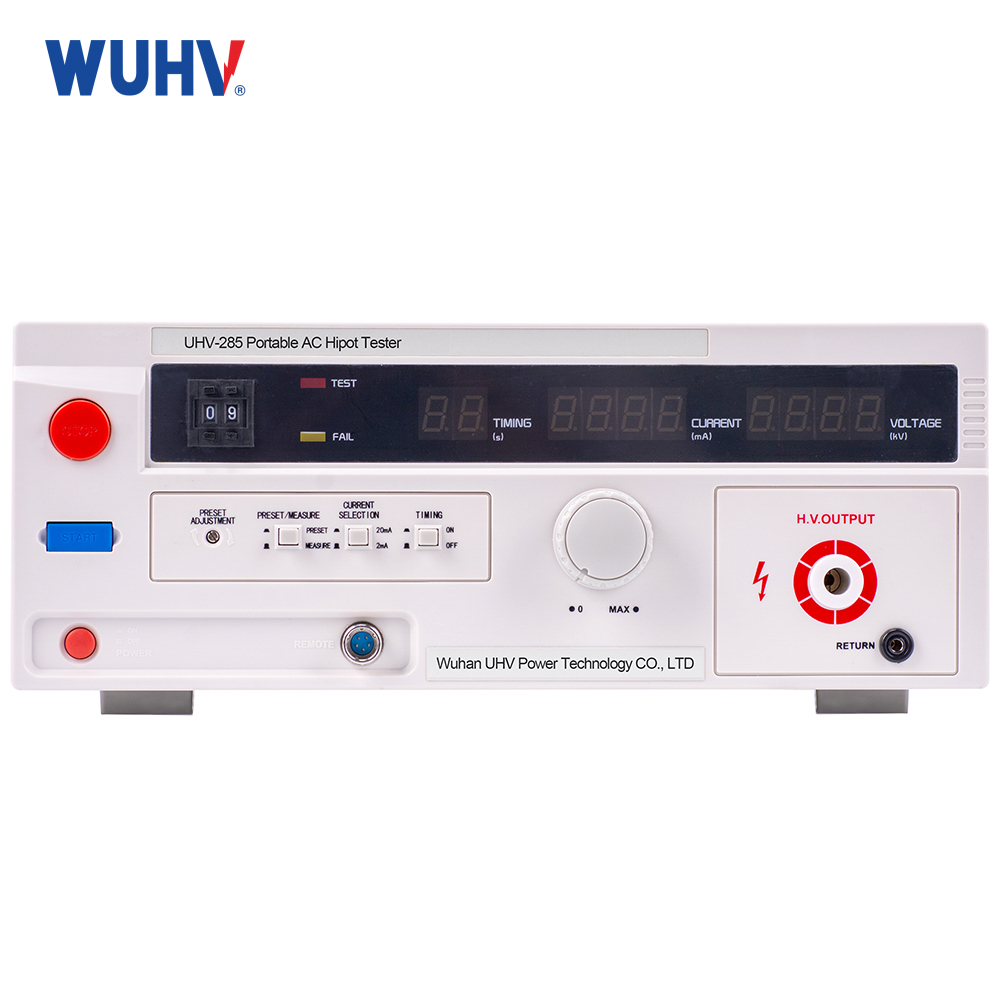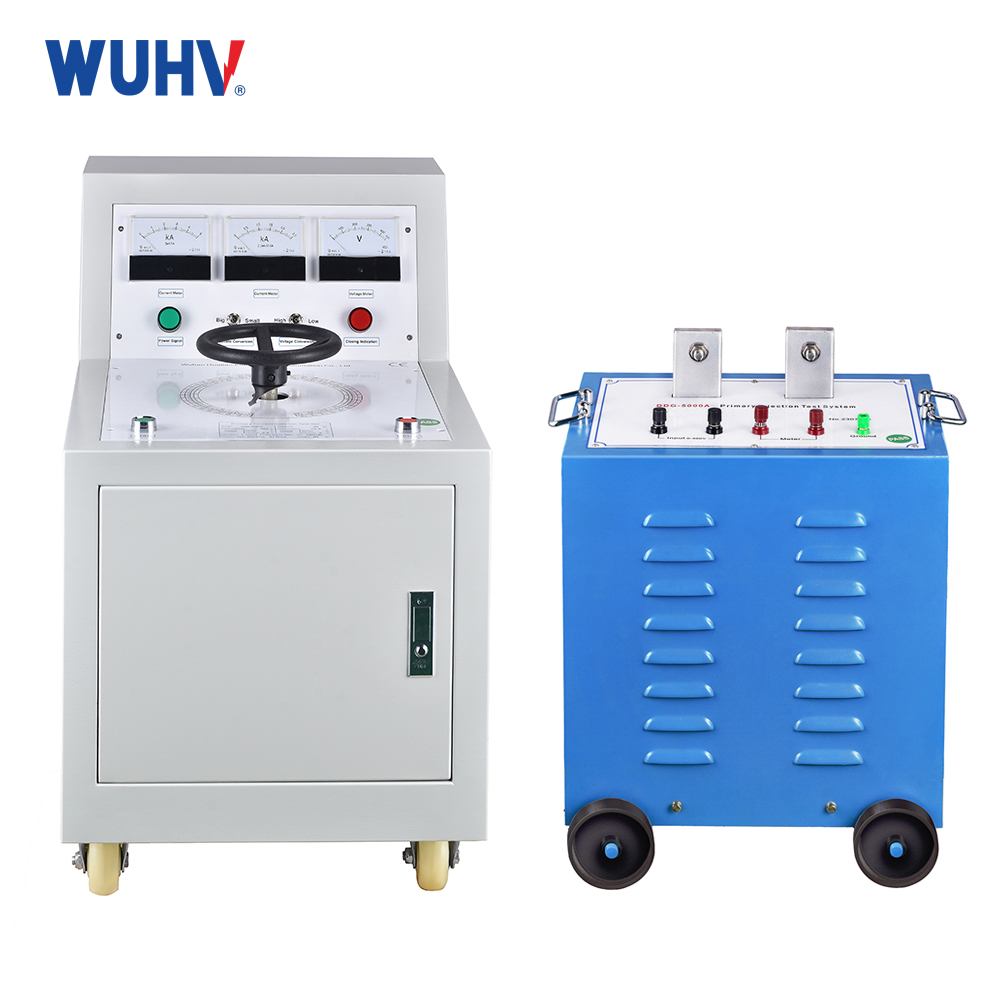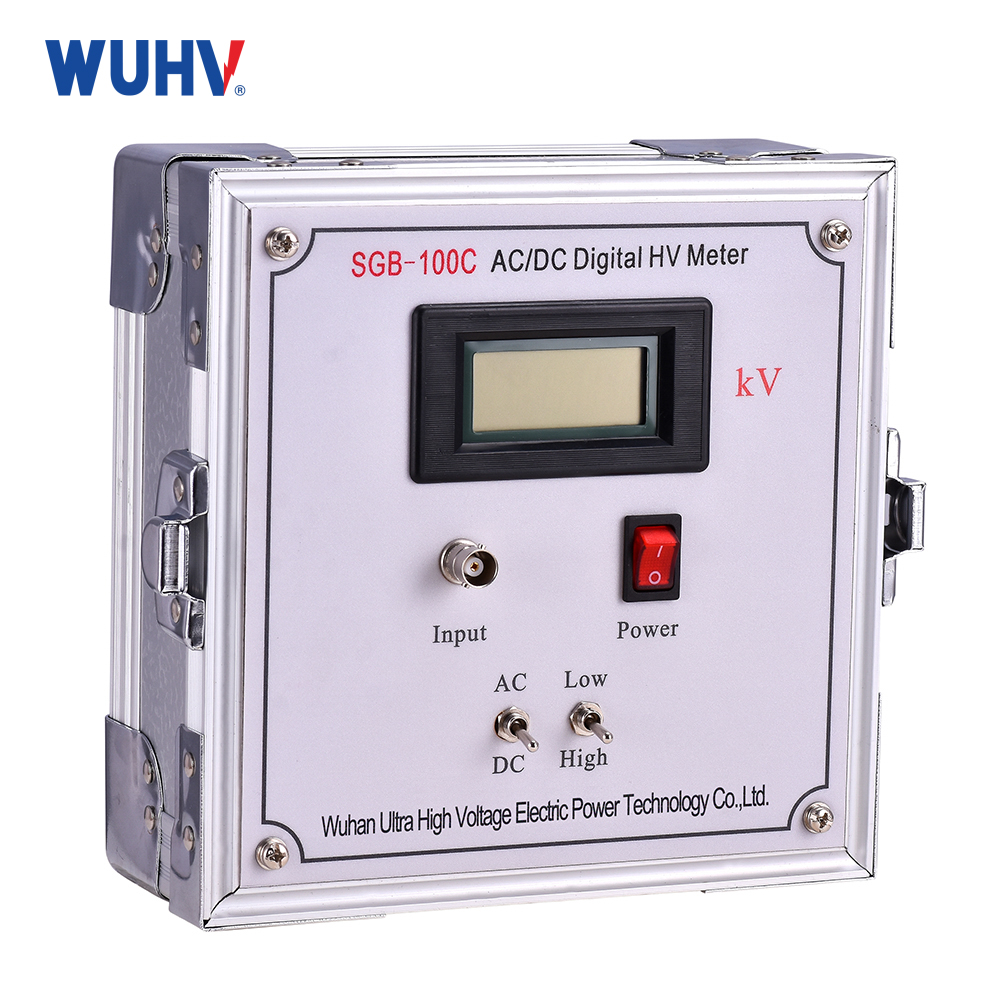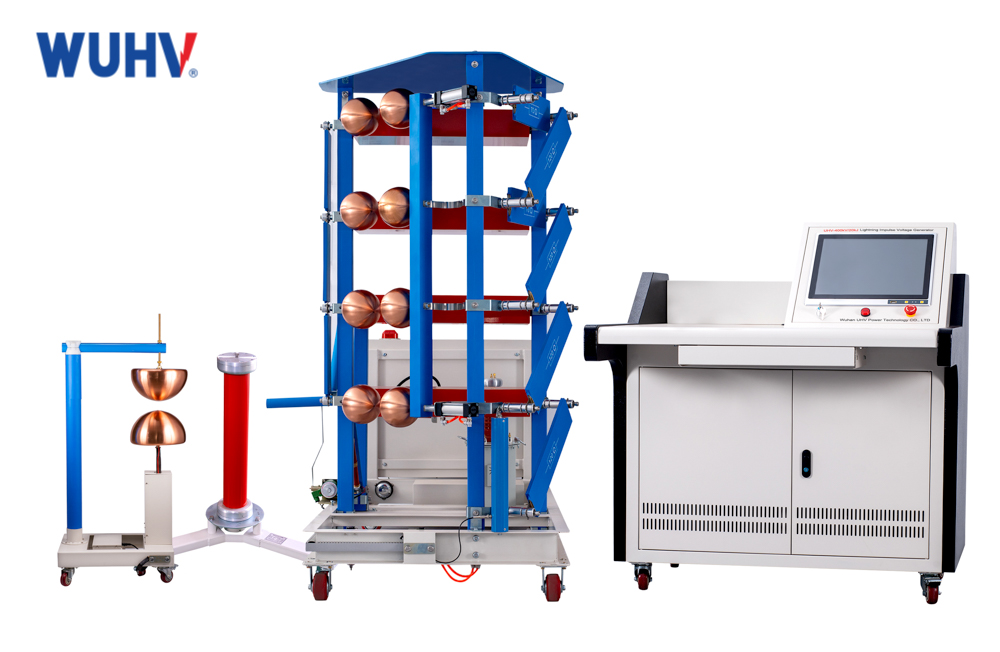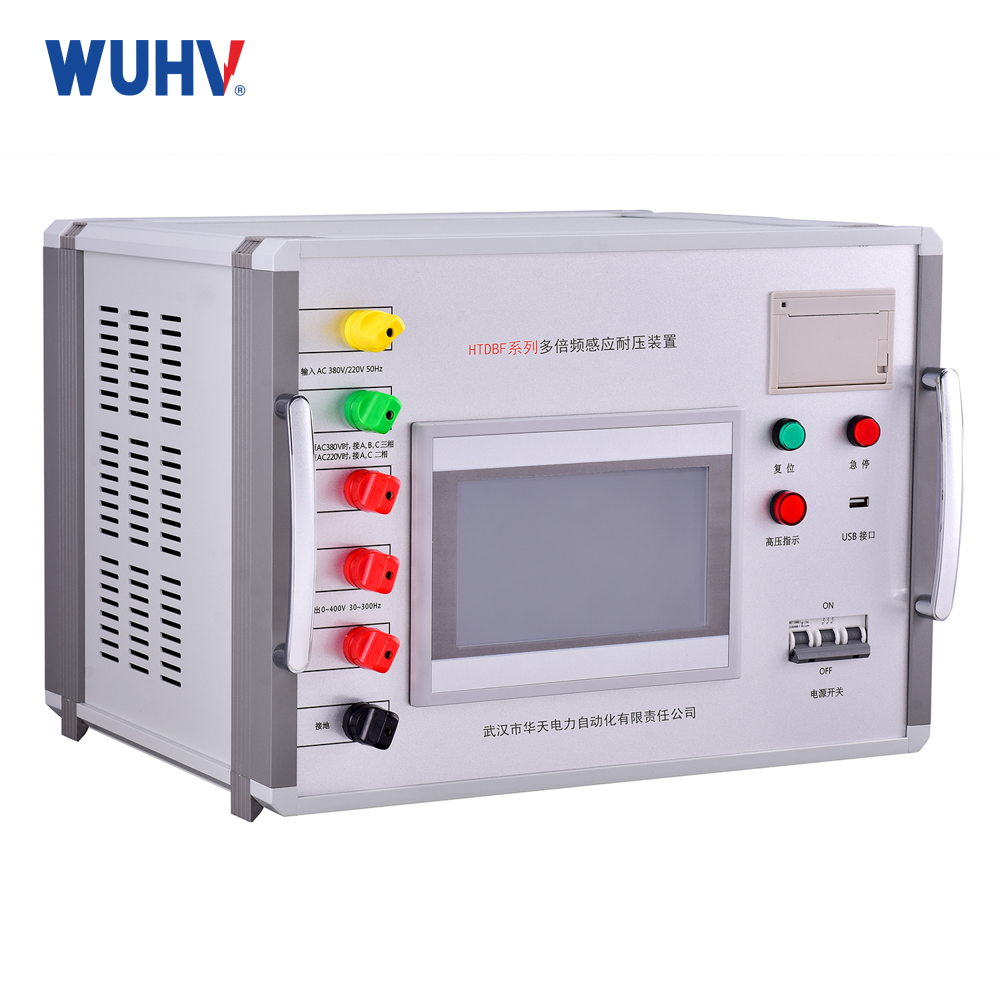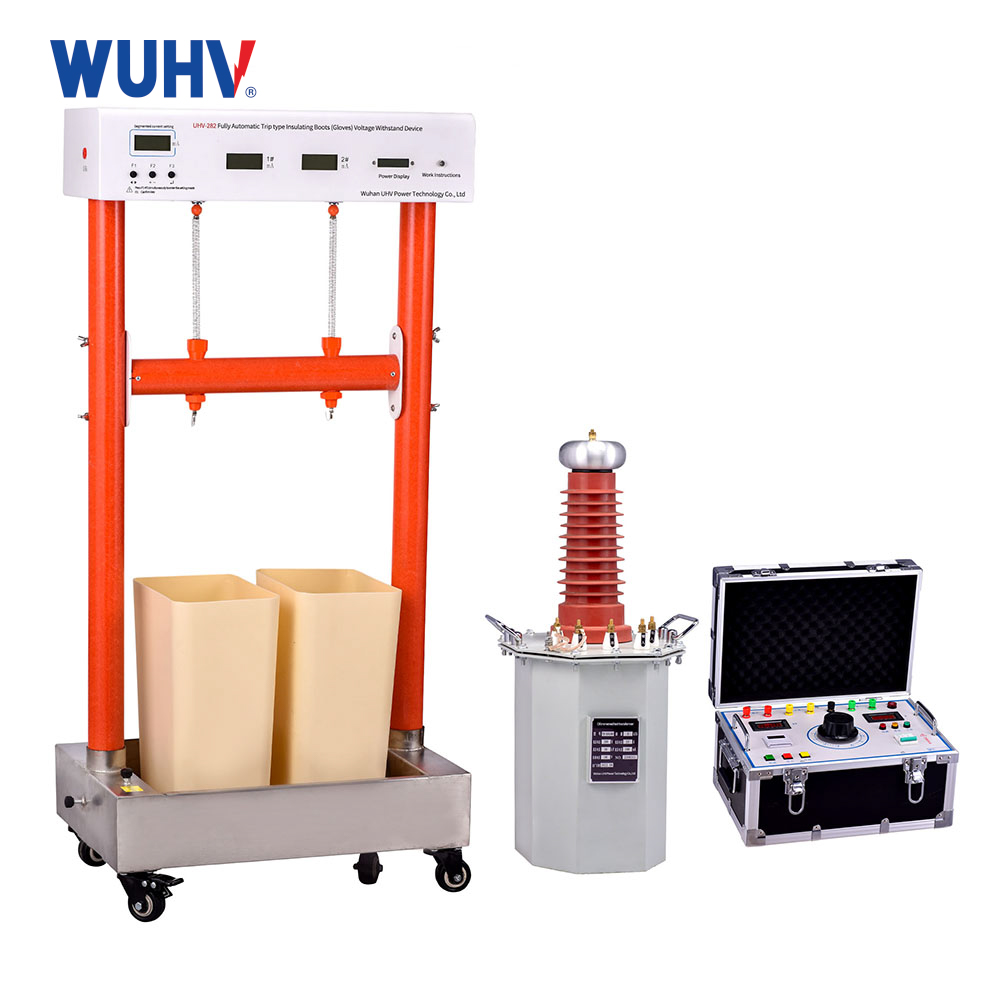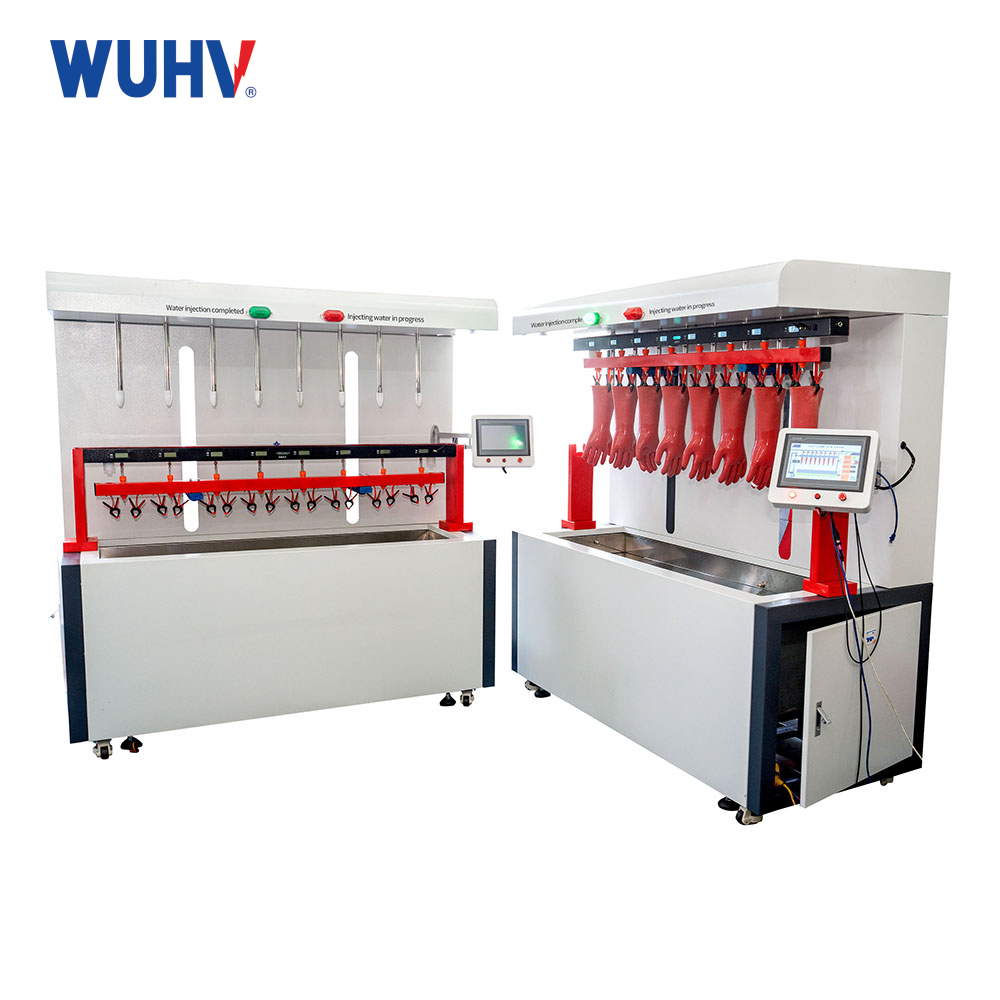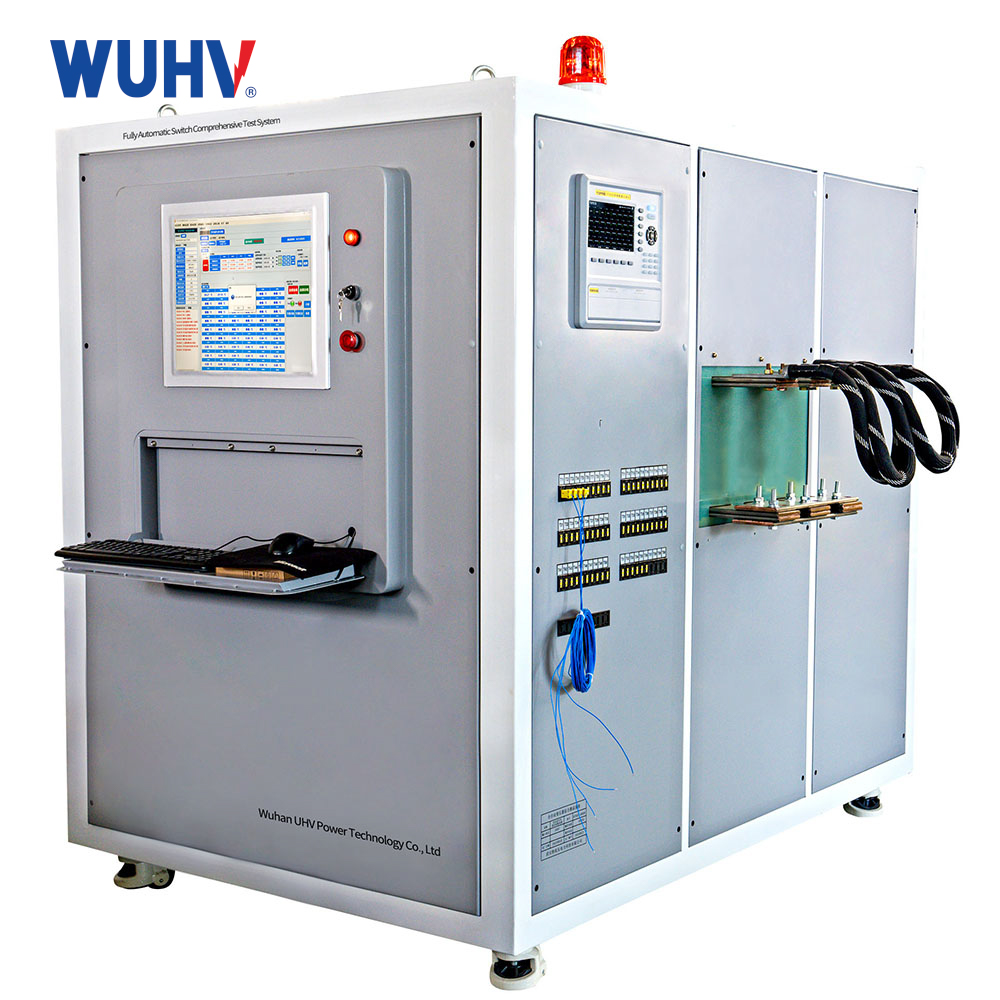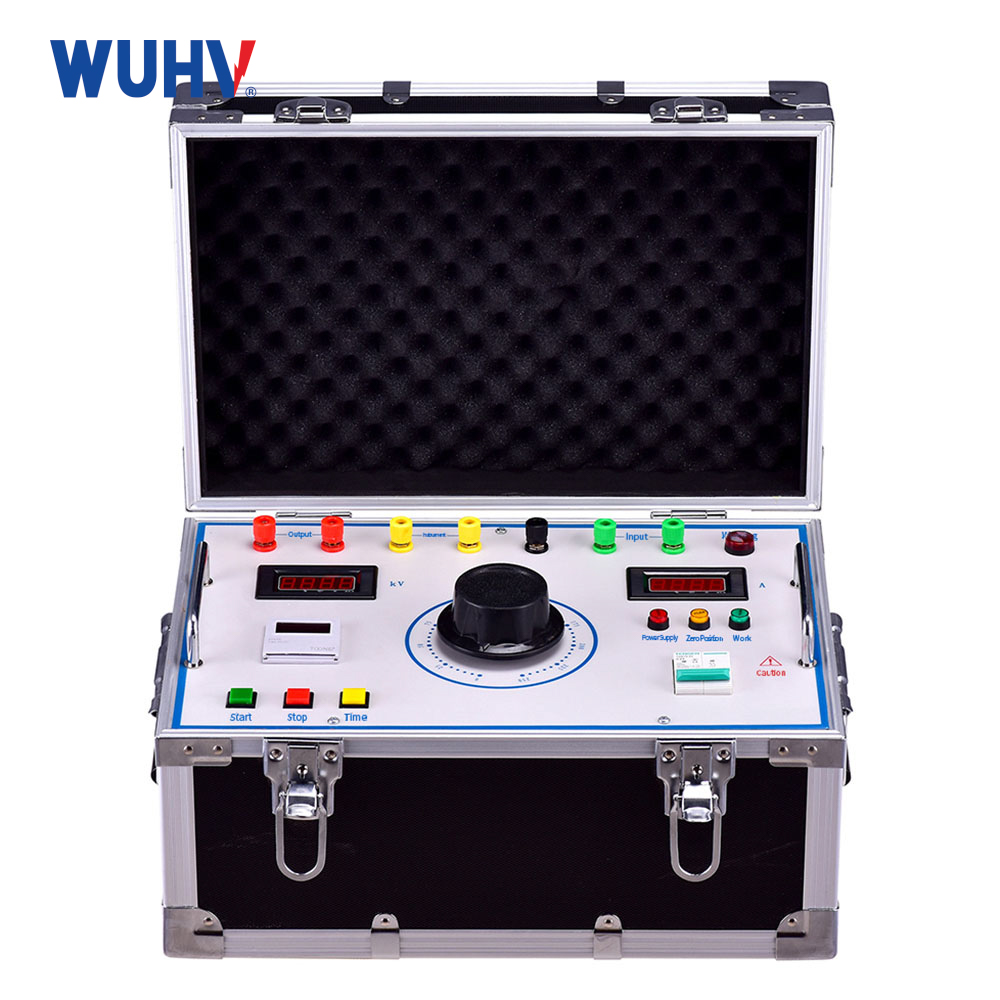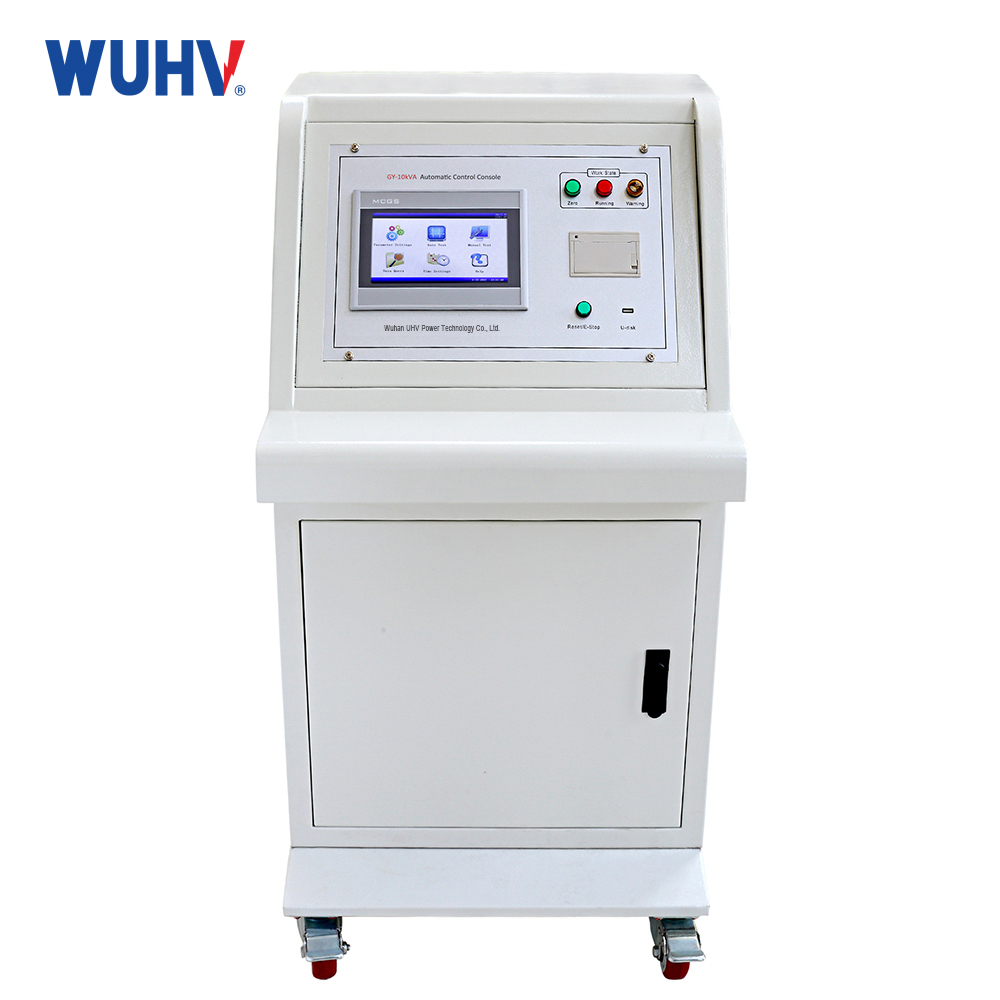Product parameters
Suitable for voltage withstand test projects of electrical equipment with high insulation equivalent capacitance
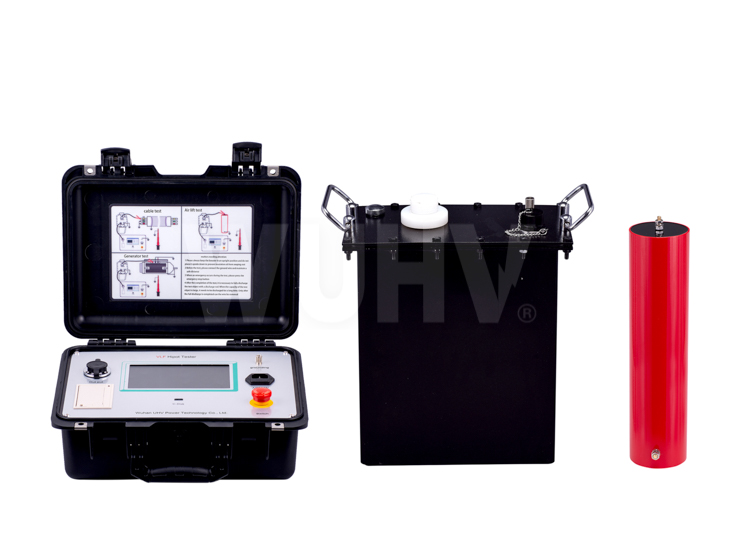
Technical parameters
Model | Rated voltage | Load capacity | Power fuse | Generator power | Product structure, weight |
30/1.1 | 30kV(peak) | 0.1Hz,≤1.1µF | 10A | >3kW | host:4kg,booster:25kg |
0.05Hz,≤2.2µF | |||||
0.02Hz,≤5.5µF | |||||
0.01Hz,≤11µF | |||||
40/0.8 | 40kV(peak) | 0.1Hz,≤0.8µF | 15A | >4kW | host:4kg,booster:25kg |
0.05Hz,≤1.6µF | |||||
0.02Hz,≤4µF | |||||
0.01Hz,≤8µF | |||||
50/0.7 | 50kV(peak) | 0.1Hz,≤0.7µF | 20A | >5kW | host:4kg,booster:35kg |
0.05Hz,≤1.4µF | |||||
0.02Hz,≤3.5µF | |||||
0.01Hz,≤7µF | |||||
60/0.6 | 60kV(peak) | 0.1Hz,≤0.6µF | 25A | >6kW | host:4kg,booster:45kg |
0.05Hz,≤1.2µF | |||||
0.02Hz,≤3µF | |||||
0.01Hz,≤6µF | |||||
80/0.5 | 80kV(peak) | 0.1Hz,≤0.5µF | 30A | >8kW | host:4kg,booster:50kg |
0.05Hz,≤1.0µF | |||||
0.02Hz,≤2.5µF | |||||
0.01Hz,≤5µF | |||||
90/0.4 | 90kV(peak) | 0.1Hz,≤0.4µF | 30A | >9kW | host:4kg,booster:55kg |
0.05Hz,≤0.8µF | |||||
0.02Hz,≤2µF | |||||
0.01Hz,≤4µF |
Nickname: vlf hipot,hipot vlf,vlf hipot test,vlf cable test ,vlf hipot instruments ,vlf hi pot
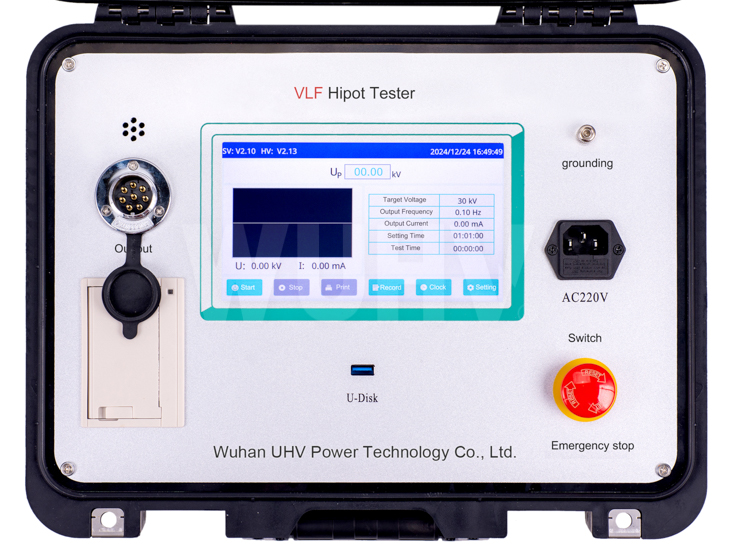
1.Transportation and storage
1) Transportation
This product must be packed during transportation. Cartons or wooden cases can be used as packing cases, and foam shockproof layer should be padded in the packing cases. Packaged products should be able to be transported by road, railway, and air. During transportation, it is not allowed to be placed in an open cargo box. The warehouse should pay attention to rain, dust, and mechanical damage prevention.
2) Storage
When the instrument is not in use, it should be stored indoors in an environment with a humidity of -20 ℃ to+60 ℃, a relative humidity not exceeding 85%, ventilation, and no corrosive gases. Storage should not be placed close to the ground or walls. In humid areas or seasons, if this instrument is not used for a long time, it is required to be powered on once a month (about two hours) to dissipate moisture and protect the components
2.Strict attention should be paid to the following points during the experiment:
1) The booster equipped with this instrument shall not be used for other purposes.
2) Do not place the booster on the side or upside down to prevent the leakage of internal insulation oil.
3) If the instrument is charged inside and malfunctions due to operation or wiring errors, do not disassemble and repair it yourself to avoid accidents. Instead, contact our company for repair.
4) To ensure personal safety, a safe distance must be maintained before and during the experiment.
5) Before or after starting the voltage boosting process, a discharge rod should be used to fully discharge the test sample.
6) When connecting, disconnecting, or temporarily not using the instrument, the power should be turned off.
